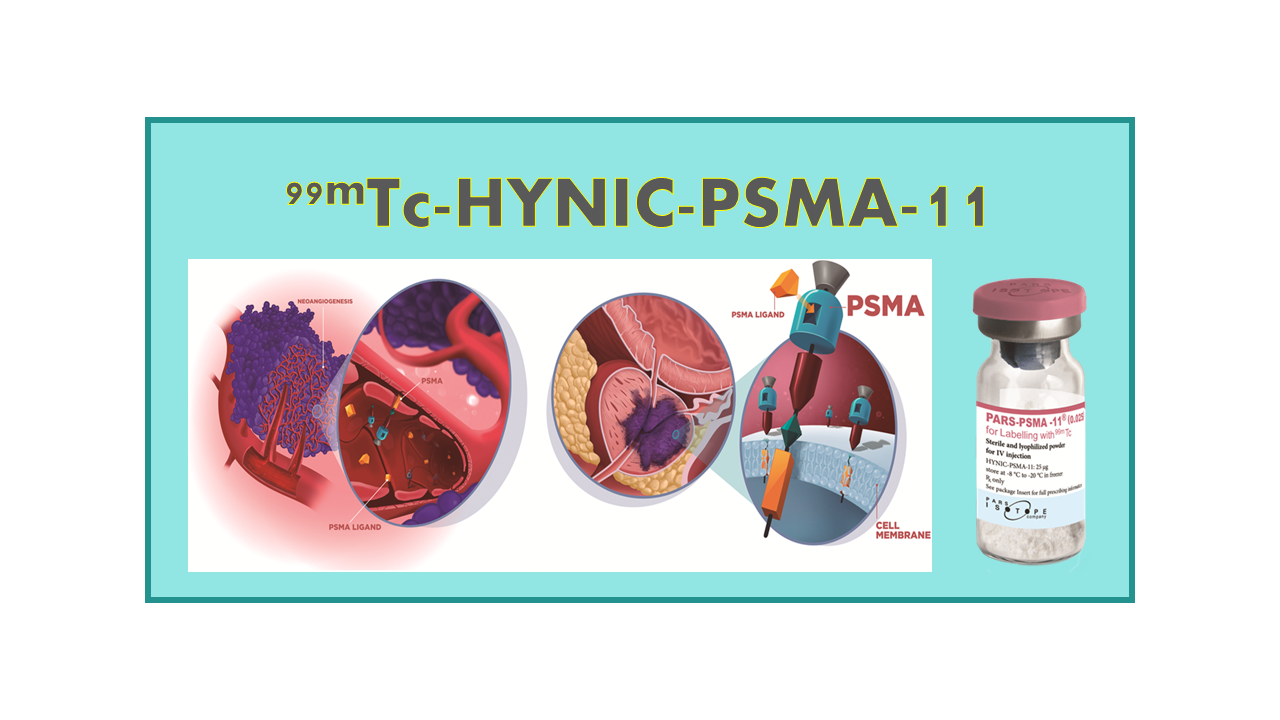
99mTc-HYNIC-PSMA-11
April 7, 2024
99mTc-HYNIC-PSMA-11 ( or technetium-99m-labeled hydrazinonicotinamide (HYNIC)-PSMA-11) is a radiopharmaceutical used for imaging prostate-specific membrane antigen (PSMA) expression in prostate cancer. PSMA is a transmembrane protein that is highly expressed in prostate cancer cells, making it a valuable target for imaging and therapy.
The HYNIC-PSMA-11 compound consists of a PSMA-targeting molecule (PSMA-11) conjugated to a chelating agent called HYNIC, which allows for the complexation with the radioisotope technetium-99m (99mTc). This radiotracer is administered intravenously to patients and then imaged using a gamma camera, allowing for the visualization of PSMA expression in prostate cancer lesions.
The high sensitivity and specificity of 99mTc-HYNIC-PSMA-11 make it a valuable tool for detecting primary and metastatic prostate cancer lesions, as well as for monitoring treatment response. It has shown promising results in improving the accuracy of prostate cancer staging and guiding treatment decisions.
Overall, 99mTc-HYNIC-PSMA-11 plays a crucial role in the management of prostate cancer patients by providing non-invasive imaging information that can help in diagnosis, staging, and treatment planning.
Description
99mTc-HYNIC-PSMA-11 (99mTc-HYNIC-Glu-Urea-A, 99mTc-HYNIC-PSMA, 99mTc-PSMA) is a SPECT tracer based on the original generic PET tracer (PSMA-11) from the PSMA receptor targeting family developed at the Heidelberg University, Germany. There is no IP coverage on this molecule and therefore several generic companies have explored the possibility to bring this tracer as cold kit on the market, among which PARS Isotopes. The Iranian company launched the kit in the course of 2020.
99mTc-HYNIC-PSMA is also under early evaluation at the Fudan University, PRC and at the Postgraduate Institute of Medical Education and Research (PGIMER) Chandigarh, India.
Clinical applications
99mTc-HYNIC-PSMA is a prostate cancer imaging agent that is expected to be used for the same target population as for its PET imaging analogue 68Ga-PSMA-11. However, the aim of developing such a tracer is to make a SPECT agent available for centers that to not have access to PET cameras or difficulties in accessing 68Ge/68Ga generators.
Availability
Even if several companies are claiming developing a tracer for PSMA imaging, PARS was, until 2020, the only company that is providing access to a cold kit for a PSMA SPECT imaging agent (PARS-TectoPSMA).
Competition
Among the products that are presently under development, there is only a limited number of molecules that are intended to be labelled with 99mTc and that have to be considered as “me-too’s” or “me-too’s plus”. The most advanced 99mTc-labeled tracers are 99mTc-Trofolastat (Progenics/FUJIFILM) and 99mTc-iPSMA (ININ/Telix Pharma).
In any case, competition will be high with ¨PET analogues, as the number of PET PSMA targeting tracers under development and labeled with 68Ga, 18F, 89Zr or 64Cu is quite high.
Comments
PARS Isotope remains limited by the present political situation (embargo) and this tracer is available only in a limited number of markets beyond Iran. Presently markets that have access to PARS products include India, Iraq, Syria and Turkey as well as some Middle East countries. Depending upon the evolution of international politics, PARS is in a position to propose these products to additional countries.